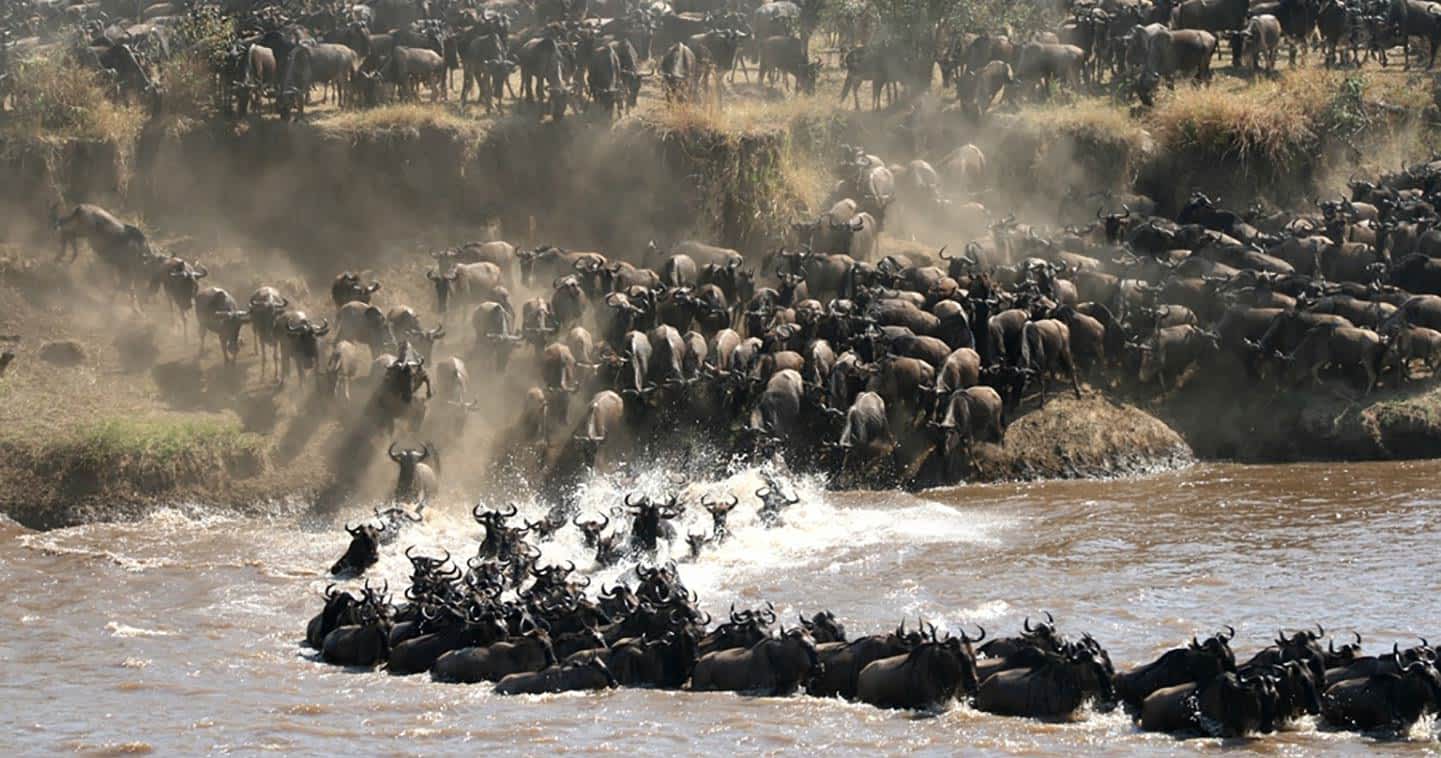Every year, the plains of the Serengeti transform into a moving tapestry of life, as over two million wildebeests, zebras, and gazelles embark on a 1,200-mile journey. This migration is not just a simple passage; it’s an extraordinary cycle of life and survival. The sheer number of animals and the perilous journey they undertake is a testament to nature’s relentless drive.
The roots of this massive migration lie deeply embedded in the Serengeti ecosystem’s ancient rhythms. Scientists estimate that 1.5 million wildebeests alone venture forth each season, making it the largest terrestrial animal migration on Earth. This spectacle, while awe-inspiring, underscores the delicate balance of natural ecosystems that have existed for millennia and the crucial role of conservation efforts in preserving this marvel for future generations.

The Essentials of Preparing for the Serengeti Migration
To truly experience the Serengeti Migration, timing is crucial. The best time to witness this natural marvel is between June and September. During these months, herds cross the Grumeti and Mara rivers. Watching them navigate these waters is both thrilling and dramatic. Learn about specific dates and locations to ensure you don’t miss the highlights.
Deciding on the right gear can make or break your safari adventure. Comfortable clothing is essential as Tanzania’s temperatures can vary. Binoculars are a must for spotting animals in the distance. Don’t forget to bring a camera with a good zoom lens. Capture breathtaking moments and scenes you will cherish forever.
Choosing the right place to stay also enhances your migration experience. Lodges and camps offer different perspectives and comfort levels. Some lodges are located right on the migration route, providing front-row views. Consult with experts to find accommodations that meet your needs and elevate your journey. Research options to enjoy both comfort and excellent vantage points.
It’s important to remember the impact of our visits on nature. Supporting eco-friendly businesses helps preserve these fragile ecosystems. According to the article, local tour operators often contribute directly to conservation. This ensures that these majestic spectacles remain for future generations. Always choose tourism options that respect and protect wildlife habitats.
What to Know Before You Go: Best Times and Strategic Viewing Tips
The Serengeti Migration is a year-round event, but certain months offer prime viewing opportunities. From January to March, the herds gather in the southern Serengeti for calving season. This is a great time to witness the birth of thousands of wildebeest calves. Between July and August, the migration reaches the Mara River, creating a dramatic scene as animals risk the crossing. You’ll want to plan your trip to coincide with these significant events.
Strategic viewing tips can significantly enhance your safari experience. Positioning yourself near water sources is key since animals frequent these spots to drink. Early morning and late afternoon are optimal times for sightings. The soft lighting during these hours also makes for stunning photography. Being patient and observant will reward you with memorable encounters.
Choosing the right guide is another crucial aspect of your journey. A knowledgeable guide can navigate the vast Serengeti and offer insightful wildlife information. They can predict animal movements to get you the best views. In addition, according to the article, local guides are invaluable as they know the terrain intimately. Opt for an experienced guide to maximize your safari experience.
Finally, respect the natural environment to ensure the migration continues for future generations. Stick to marked trails and maintain a safe distance from the animals. Here is the article on responsible wildlife viewing that offers great advice. Environmental sustainability should always be a priority. By being mindful, you help protect these incredible ecosystems.
The Impact and Importance of the Serengeti Migration on Local Ecosystems
The Serengeti Migration plays a vital role in maintaining the balance of ecosystems. As the herds move, they graze on vegetation, which helps to keep the landscape open and prevent overgrowth. This, in turn, supports a variety of other species, including predators like lions and hyenas. The movement of such a large number of animals also aids in nutrient distribution, enriching the soil. This cycle ensures that the terrain remains fertile and diverse.
The migration also has profound effects on water sources. The herds’ constant movement helps refresh rivers and water holes. Their presence ensures that water bodies do not stagnate, keeping them healthy for all wildlife. Furthermore, migrating animals contribute to the overall health of the ecosystem by fertilizing the soil. Their droppings provide essential nutrients that support plant growth.
Beyond just the physical environment, the migration influences local communities in significant ways. It supports tourism, which is a major source of income for people living near the Serengeti. Tourism creates jobs and provides funds for conservation efforts. According to the article, revenues from safari tours are often reinvested into local projects. This helps improve infrastructure and services in nearby towns and villages.
The ecological importance of the Serengeti Migration cannot be overstated. It sustains predator-prey relationships, ensuring a balanced food web. The movement of the herds prevents overgrazing in any one area. Here is the post on how different species depend on this migration for their survival. This remarkable event is a testament to the interconnectedness of nature and the need to preserve such wonders.
Key Takeaways
- The Serengeti Migration helps maintain balance in the ecosystem.
- Animal movement during migration prevents overgrowth and supports other species.
- Migrating herds keep water sources fresh and healthy for all wildlife.
- Tourism from the migration provides income and supports local communities.
- The migration is crucial for the survival of many predator-prey relationships.
Conclusion
In understanding the Serengeti Migration, one appreciates the intricate balance of nature and its impact on local ecosystems. The migration not only supports wildlife diversity but also sustains the natural landscape by preventing overgrazing and promoting soil fertility. It is an extraordinary journey that highlights the resilience and adaptability of various species.
This significant event also underscores the importance of conservation and eco-tourism. By witnessing the migration, visitors contribute to the local economy and help fund vital conservation projects. The Serengeti Migration is not just a spectacle; it is a crucial component of the natural world’s ongoing story.

